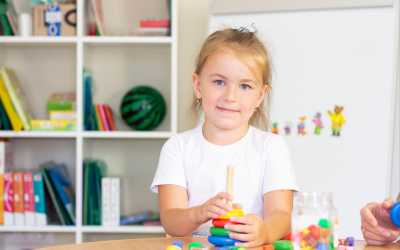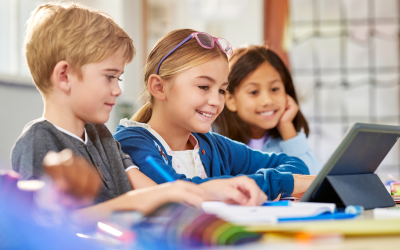With the rise of technology, screens have become ubiquitous in the daily lives of children. However, children’s use of screens is often associated with concerns about health and well-being, particularly with respect to the impact on children’s learning and development.
Yet many experts agree that screens can also be used constructively to enhance children’s learning. This use can include educational apps, educational games, and online resources that can help children build cognitive, social, and emotional skills.
How can screens be used constructively for children’s learning?
Screen use can be very beneficial to children’s learning when used constructively. The screens offer a range of interactive and immersive educational tools that can help children develop their understanding of complex topics and build skills in areas such as math, science and language. For example, educational apps, educational videos, and online educational games can all be effective tools for children’s learning.
The screens can provide real-time information and connect children to information sources around the world. Children can use screens to explore different cultures, communicate with people from different countries, and participate in collaborative projects with peers around the world. In addition, screens can help improve children’s participation in class by providing visual and auditory support for lessons.
To use screens constructively for children’s learning, it is important to follow some best practices. First, parents and teachers need to monitor screen time and limit screen use to specific times. Second, it is important to select quality educational programs and encourage children to actively participate in learning activities, rather than just passively consuming content. Finally, it is important to encourage responsible screen use by teaching children the skills to safely navigate the Internet and to maintain a balance between screen use and other activities.
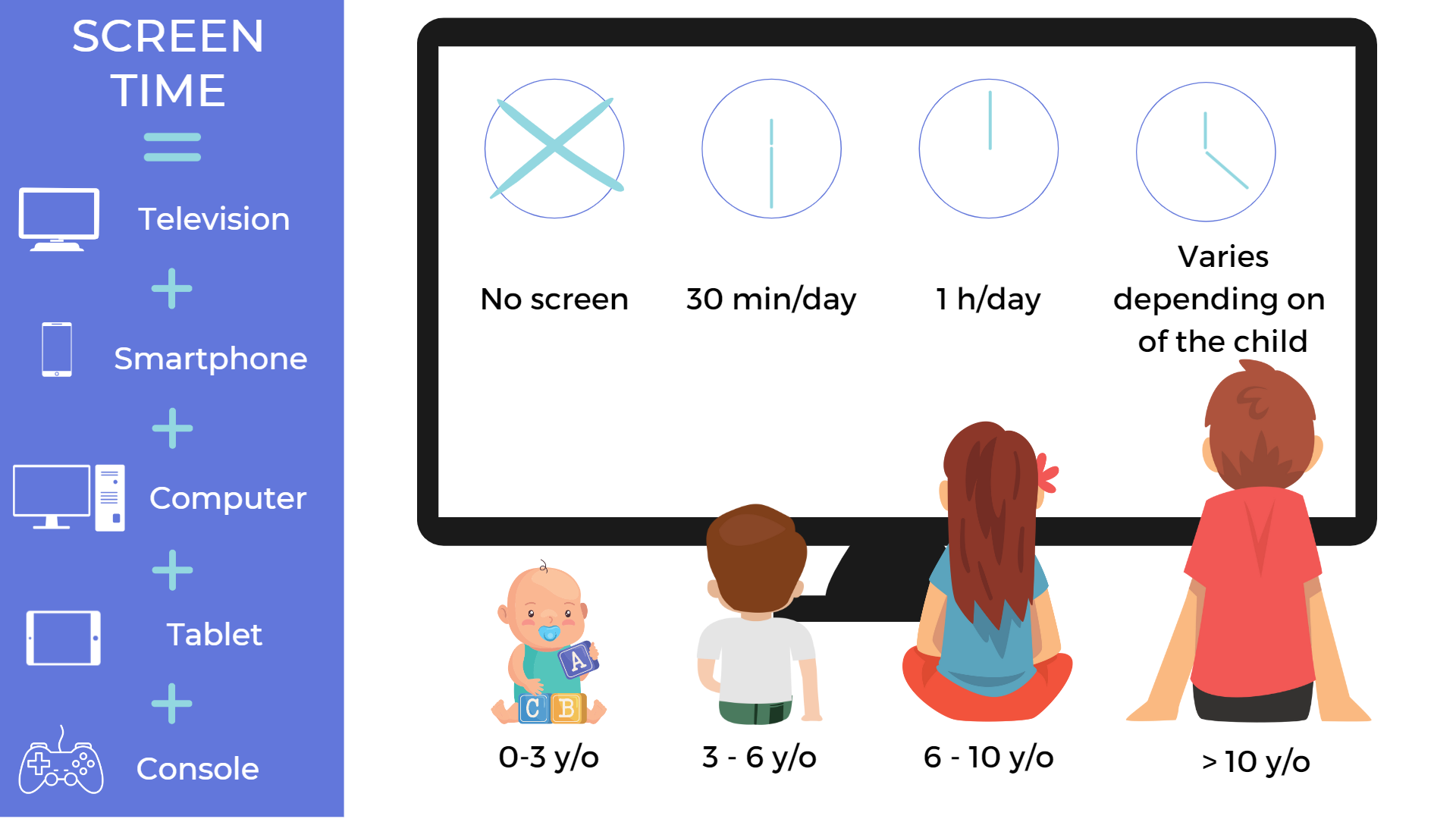
However, for effective and responsible use, it is important to follow some best practices, such as limiting screen time, selecting quality educational programs, and teaching the skills necessary to safely navigate the Internet.
What educational applications, educational games and online resources can help children learn and develop?
There are many educational applications, educational games and online resources available today that can help children learn and develop. Educational technologies have evolved to provide fun and interactive tools that allow children to learn while having fun.
Duolingo
One of the most popular educational applications is “Duolingo”. This application offers foreign language courses in the form of interactive games, which allow children to learn a new language while having fun. The lessons are divided into short sessions and are adapted to the individual levels of the learners.
Khan Academy
Another example of a popular educational application is “Khan Academy”. This app offers free online courses on a variety of subjects, including math, science, and the arts. Children can take classes at their own pace and receive real-time feedback on their progress.
Minecraft
Educational games are also becoming increasingly popular. For example, the game “Minecraft” is a virtual construction game in which children can build structures using blocks. This game can be used to teach geometry and engineering principles in a fun and interactive way.
COCO THINKS and COCO MOVES ©.
The COCO THINKS and COCO MOVES © application contains more than 30 educational games to work on French, math, logic, memory or attention.
In addition, the application imposes a sports break every 15 minutes of screen time to teach measured screen use.
Much smarter than a parental control!
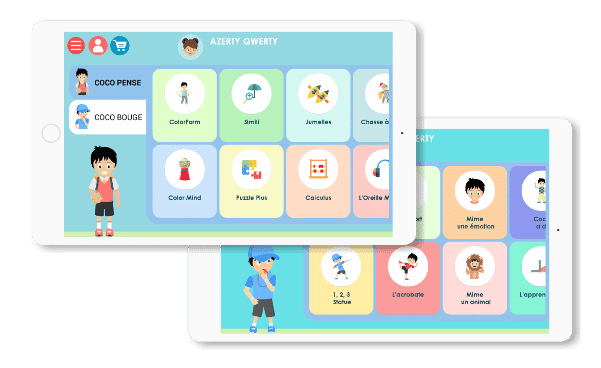
Online resources
Finally, online resources such as educational videos and e-books are also increasingly used. For example, “TED-Ed” is a library of educational videos that offer lessons on a variety of topics, including science, technology, history and the arts. Children can watch these videos to learn new things in a fun and interactive way.
Educational apps, educational games and online resources are useful tools to help children learn and develop. These tools offer a fun and interactive alternative to traditional learning, and can help keep children engaged and motivated in their learning.
What are the benefits of using screens for children’s learning?
Displays offer a multitude of opportunities for learning, collaboration, creation and interactive engagement. Some important benefits of using screens for children’s learning include
Educational resources
First, the screens offer a variety of educational resources, such as videos, e-books, tutorials, interactive quizzes and educational games. For example, online educational programs, such as Khan Academy, offer thousands of free instructional videos for children of all ages. Children can access these resources at any time and from anywhere, allowing them to learn at their own pace and develop their independence.
The interaction
In addition, the screens provide an interactive experience for children, using graphics, animation, sound and video. This interactive approach can improve a child’s understanding by enhancing memorization, motivation and attention. For example, an educational app like Duolingo uses a playful approach to teaching a foreign language, using pictures, games and rewards to encourage children to learn.
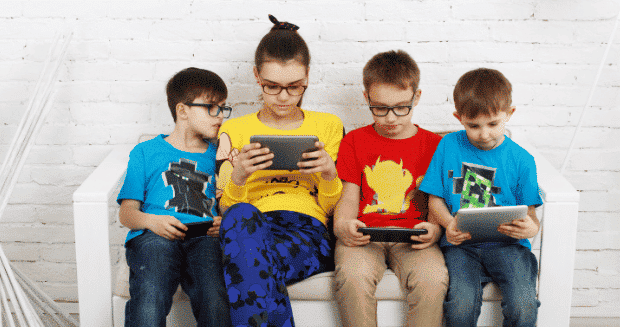
The connection
Screens can also help children connect with other children through communication tools, such as video calls and online forums. Children can discuss their learning experiences, collaborate on projects and get feedback on their work. This social interaction can help children develop social skills and confidence.
Creativity
Finally, screens can help children explore their creativity by providing tools for design and creation. For example, applications like Scratch allow children to create interactive programming projects using blocks of code. This “learning by doing” approach can help children experiment and solve problems in creative ways.
The use of screens for children’s learning has many benefits for improving comprehension, motivation, social interaction and creativity. However, it is important to monitor screen time and ensure that children are using age-appropriate and educational applications and programs.
What are the challenges of using screens for children’s learning?
One of the main challenges is the overstimulation and distraction that screens can cause. Children can easily become distracted by notifications, ads and other online content, which can interfere with their ability to focus and remember information.
Mental health problems
In addition, excessive screen use can also lead to mental health problems such as anxiety and depression. Children can become isolated and addicted to screens, which can affect their social and emotional development.
Reliability
Another challenge is the quality and reliability of online educational content. Children may be exposed to incorrect or inappropriate information, which can affect their understanding and intellectual development. Therefore, it is important for parents and teachers to monitor and validate online educational content to ensure that it is appropriate for the child’s age and developmental level.
Access to a screen
Finally, there is also an issue of access and equality in the use of screens for learning. Not all children have access to a computer or tablet, which can prevent them from enjoying the benefits of online learning. In addition, some children may not have access to a reliable Internet connection, which can make it difficult to use online resources.
Therefore, it is important for parents, teachers, and policymakers to work together to find effective solutions for using screens responsibly and appropriately for children’s learning. This may include monitoring screen use, promoting balanced use of technology, validating online educational content, and providing equitable access to technology.
The use of screens for children’s learning should be viewed as an additional tool to enhance children’s learning experience, rather than a comprehensive solution for all educational problems. Screens can help build children’s cognitive, social and emotional skills, but they should not replace the importance of traditional learning, human interaction and hands-on experience.
Parental control
Parental control is a set of measures to protect children from inappropriate content online and to monitor their activity on the Internet. It can include the use of filtering software to block access to specific websites, limiting the amount of time spent online and monitoring online conversations. The main purpose of parental controls is to allow parents to protect their children from potential dangers of the Internet, such as cyber-stalking, pornography and online predators. While parental controls are a valuable tool for parents, it is important to note that they are not a substitute for open and honest communication with children. Parents should also be aware of the limitations of parental controls and the need to closely monitor their children’s Internet use.
Other articles that might interest you:
Supporting children with autism
Dynseo proposesSUPPORTING CHILDREN WITH AUTISM with COCO THINKS AND COCO MOVESDynseo and its team are very much...
Supporting DYS children with COCO THINKS and COCO MOVES
Dynseo proposesDYS disorders with COCO THINKS and COCO MOVESOur educational and pedagogical games program COCO THINKS...
Language development
Children communicate from birth with movements, crying, looking at each other or with smiles. After only a few months,...
Supporting children with Down Syndrome with Coco
Dynseo proposesDOWN SYNDROME with COCODown syndrome is a non-hereditary chromosomal abnormality that leads to the...
Supporting people after a stroke
Dynseo proposesStroke with CLINT, your brain training coachThe Dynseo team is very involved in helping people who have...
Supporting someone with Alzheimer’s
In this guide, we will detail how SCARLETT can be used for supporting someone with Alzheimer's. SCARLETT is a...
10 myths about the human brain you didn’t know
The brain is an incredible muscle, however there are many things we do not know, and what we do know is not always...
Using Digital Tools to Support Students with Special Educational Needs
Special Educational Needs (SEN) encompass a wide range of learning difficulties and disabilities that can hinder a...
Down Syndrome and Communication: Facilitating Interaction with Visual and Interactive Supports
When we think about Down syndrome, we often recognize it as a genetic condition that affects physical and cognitive...
How to Track Progress in People with Down Syndrome Using Digital Tools
Down syndrome, a genetic condition caused by the presence of an extra chromosome 21, affects approximately 1 in every...



